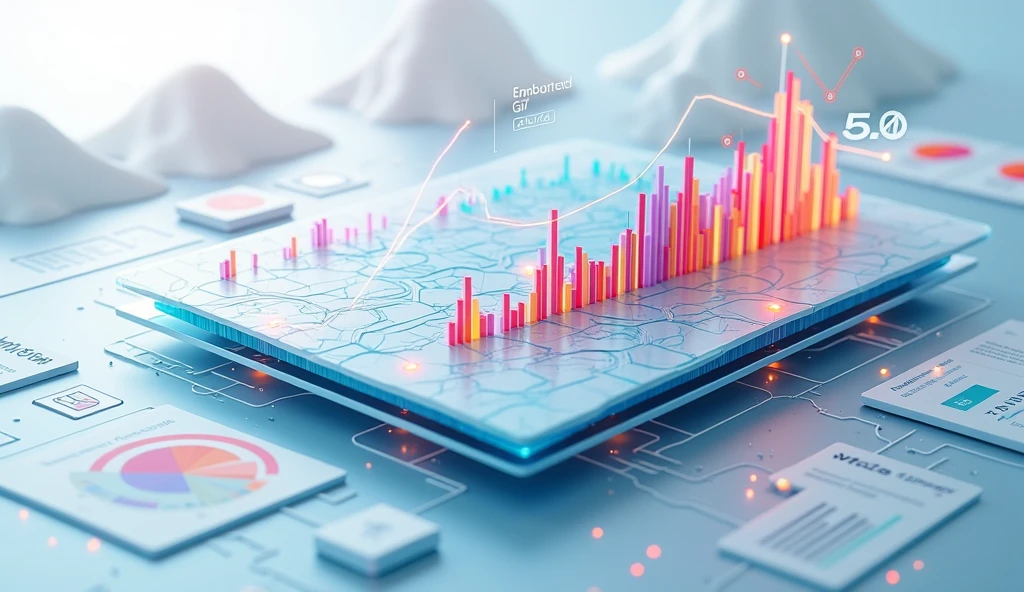In today’s data-driven world, the ability to analyze and interpret data has become essential for effective decision-making. Organizations increasingly rely on data analytics to gain insights that can drive performance and strategic goals. Data analysis is a highly sought-after skill, empowering professionals to turn raw data into actionable information.
With the growing importance of big data, the demand for individuals skilled in data analytics continues to rise across various industries.
Companies are seeking specialists who can not only collect and process data but also derive meaningful conclusions that can influence business outcomes. Professionals equipped with this expertise play a critical role in shaping strategies and boosting operational efficiency.
As businesses face complex challenges in the marketplace, the insights gained from data analysis become invaluable. This evolving field offers numerous opportunities for those looking to develop their skills, making it an attractive option for career advancement. Embracing data analytics can open doors to new possibilities in a variety of professional settings.

The Essential Role of Data Analytics
Data analytics plays a crucial role in enhancing decision-making processes by providing data-driven insights. It helps organizations refine strategies and anticipate future trends through careful analysis.
Data-Driven Decision-Making
Data-driven decision-making allows organizations to base their choices on empirical evidence rather than intuition. By utilizing analytical tools, they can examine large datasets to identify patterns, trends, and anomalies.
Key components of data-driven decision-making include:
- Improved accuracy: Decisions backed by data reduce the likelihood of error or bias, leading to more reliable outcomes.
- Real-time insights: Advanced analytics tools provide timely data, allowing for quick responses to market changes.
- Performance optimization: Analyzing performance metrics helps businesses identify areas for improvement and streamline operations.
Organizations that embrace data insights can proactively respond to challenges and seize opportunities as they arise, positioning themselves for long-term success.
Predictive Analytics for Future Planning
Predictive analytics involves analyzing historical data to forecast future outcomes. This approach supports strategic planning by enabling organizations to anticipate market shifts and customer behavior.
Key aspects of predictive analytics include:
- Risk management: Predictive models can identify potential risks, allowing companies to take preventive measures.
- Customer insights: By analyzing past customer data, businesses can forecast future behavior, improving marketing strategies and customer retention.
- Resource allocation: Predictive analytics aids in optimizing the distribution of resources, ensuring that efforts and budgets are allocated efficiently.
Leveraging predictive analytics facilitates informed planning and helps manage resources effectively, ensuring that organizations remain agile in a dynamic environment.

Acquiring Analytical Skills
Data analytics skills can be acquired through various pathways that provide both theoretical knowledge and hands-on experience. A combination of education, practical training, and professional development is essential for mastering analytics.
Educational Pathways
Many universities offer degrees in data science, statistics, or analytics. These programs typically cover essential topics such as data manipulation, statistical analysis, and machine learning.
Core coursework often includes:
- Mathematics: Foundational math skills are crucial for understanding data patterns and developing algorithms.
- Statistics: Understanding distributions, probability, and hypothesis testing are key for analyzing and interpreting data.
- Programming: Familiarity with programming languages like Python, R, and SQL is vital for data manipulation and analysis.
Online platforms also offer a wealth of courses from institutions like Coursera and edX. These courses allow for self-paced learning and enable individuals to tailor their education to specific interests in data analytics.
On-the-Job Training and Experience
Practical experience plays a critical role in developing analytical skills. Internships and entry-level positions provide exposure to real-world data challenges and the opportunity to apply theoretical knowledge.
Common tasks in these roles include:
- Data cleaning and preparation: Ensuring data quality is crucial for accurate analysis.
- Exploratory data analysis: A fundamental step in uncovering insights and identifying trends within datasets.
Networking with industry professionals can also facilitate mentorship opportunities. Collaborating on projects or participating in hackathons can enhance analytical skills while offering practical experience.
Certifications and Professional Development
Certifications can validate expertise in data analytics and make candidates more attractive to employers. Several organizations offer relevant certifications, including Tableau, Google Data Analytics, and Microsoft.
These programs typically focus on:
- Data visualization: Presenting data in a clear, visual format to communicate insights effectively.
- Database management: Understanding how to store, retrieve, and manipulate large datasets is a key competency in analytics.
Continuous professional development is vital. Attending workshops, webinars, and conferences helps individuals stay up to date with industry trends and tools, further enhancing their analytical capabilities.
Tools and Technologies in Data Analytics
The effectiveness of data analytics hinges on the tools and technologies that professionals use to extract, process, and analyze data. The right tools can make complex data more accessible and allow for more precise analysis.
Data Visualization Tools
Data visualization is a powerful technique for communicating insights and trends in an easily digestible format. Tools such as Tableau, Power BI, and Google Data Studio allow users to create interactive dashboards and graphs that present complex data clearly.
Visualization tools are essential for:
- Making data understandable: Simplifying complex datasets for a broad audience.
- Identifying trends and patterns: Visual representations of data make it easier to spot trends that might be missed in raw data.
- Facilitating decision-making: Clear visuals help decision-makers quickly grasp the meaning behind the data and act accordingly.
Machine Learning and AI in Data Analytics
Machine learning and artificial intelligence (AI) are revolutionizing data analytics by enabling automated, intelligent data processing. Tools like TensorFlow, Scikit-learn, and IBM Watson are commonly used to implement predictive models and identify correlations within massive datasets.
The integration of AI in data analytics allows for:
- Automated predictions: Machine learning algorithms can predict future trends and behaviors based on historical data.
- Improved accuracy: AI models are capable of analyzing vast amounts of data more quickly and accurately than traditional methods.
- Optimization of business processes: Machine learning can identify inefficiencies in processes and recommend optimal solutions.
Cloud Computing and Big Data Analytics
With the exponential growth of data, cloud computing has become a critical component of modern data analytics. Platforms like Amazon Web Services (AWS), Microsoft Azure, and Google Cloud provide scalable storage and processing power for big data analytics.
Cloud computing facilitates:
- Scalability: Organizations can scale their data storage and processing needs in line with the volume of data they generate.
- Collaboration: Cloud platforms allow teams to collaborate on data analysis from anywhere, improving productivity.
- Cost-efficiency: Cloud solutions reduce the need for expensive infrastructure, making it easier for companies to adopt big data analytics.
Challenges and Ethical Considerations in Data Analytics
While data analytics provides numerous benefits, it also presents several challenges and ethical concerns. Professionals in this field must navigate these issues responsibly to maintain trust and compliance.
Data Privacy and Security
As organizations collect more personal data, ensuring privacy and security becomes paramount. Analysts must adhere to strict data protection regulations, such as the General Data Protection Regulation (GDPR) in Europe and the California Consumer Privacy Act (CCPA) in the United States.
Key concerns include:
- Data breaches: Protecting sensitive information from cyberattacks is critical to maintaining consumer trust.
- Ethical use of data: Organizations must use data ethically, ensuring that it is collected and processed with consent and transparency.
- Compliance with regulations: Adhering to local and international data protection laws is necessary to avoid legal repercussions.
Bias in Data Analysis
Bias in data analysis can lead to skewed insights and unfair outcomes. Analysts must be aware of potential biases in their data collection and interpretation processes.
To mitigate bias, professionals should:
- Ensure diverse data sources: Using a wide range of data helps reduce the risk of bias.
- Review algorithms regularly: Machine learning models must be continually assessed to ensure they are not reinforcing existing biases.
- Foster ethical awareness: Creating a culture of ethical data use is essential for avoiding bias and promoting fairness.
Conclusion
Data analytics has become an indispensable tool for decision-making in the modern world. From predictive analytics to real-time insights, mastering data analysis empowers professionals to make informed decisions that drive business success. By acquiring the necessary skills, utilizing advanced tools, and adhering to ethical standards, individuals can harness the power of data to shape the future of their organizations and industries.
As the field of data analytics continues to evolve, professionals who stay updated with the latest trends and technologies will be well-positioned to excel in their careers. Embracing data analytics not only enhances decision-making capabilities but also unlocks new opportunities for growth and innovation in an increasingly competitive landscape.
FAQ – Data Analytics:
What is it?
It is the process of examining, cleaning, transforming, and interpreting data to uncover meaningful insights, patterns, and trends. These insights help businesses and organizations make data-driven decisions.
What are the essential skills needed for a career in data analytics?
Key skills include proficiency in mathematics, statistics, and programming languages (like Python, R, and SQL), as well as experience with data visualization tools (like Tableau and Power BI), machine learning, and critical thinking.
What tools are commonly used in data analytics?
Data visualization: Tableau, Power BI; Data processing: Python, R, SQL; Big data platforms: Hadoop, Apache Spark; Machine learning: TensorFlow, Scikit-learn; Cloud computing: AWS, Google Cloud, Microsoft Azure
What is the difference between descriptive, predictive, and prescriptive analytics?
Descriptive analytics: Focuses on understanding what happened in the past by analyzing historical data.
Predictive analytics: Uses historical data to predict future outcomes or trends.
Prescriptive analytics: Provides recommendations on what actions to take to achieve desired outcomes based on data insights.
How do I get started in data analytics?
You can start by taking foundational courses in mathematics, statistics, and programming. There are also many online platforms like Coursera, edX, and Udemy offering data analytics courses. Gaining hands-on experience through internships or personal projects is also key to mastering data analytics.
What is the role of machine learning in data analytics?
Machine learning automates data analysis and predictions by using algorithms to detect patterns and trends. It helps in predictive and prescriptive analytics, allowing businesses to forecast future outcomes and make informed decisions more efficiently.
How is data privacy handled in data analytics?
Data privacy is a critical concern in data analytics. Analysts must ensure that personal and sensitive data is collected, stored, and processed securely, adhering to regulations like the GDPR (General Data Protection Regulation) and CCPA (California Consumer Privacy Act). This includes anonymizing data and implementing encryption protocols.
What is data visualization, and why is it important?
Data visualization is the practice of presenting data in a visual format, such as charts, graphs, and dashboards. It helps make complex data easier to understand and allows decision-makers to quickly grasp insights and trends, improving the clarity and impact of data analysis.
How does big data impact data analytics?
Big data refers to large volumes of data generated at high velocity from various sources. Big data analytics involves processing and analyzing these massive datasets to identify trends, patterns, and insights that can improve business decisions. Tools like Hadoop and Spark are often used to manage big data.
What are some common challenges in data analytics?
Data quality issues: Ensuring data is clean, accurate, and reliable; Data privacy and security: Protecting sensitive information and complying with regulations; Handling large datasets: Managing and processing big data efficiently; Bias in data: Avoiding biased datasets that can skew results and lead to incorrect conclusions.
Learn more Data Analytics vs Data Science



